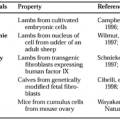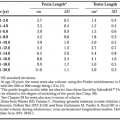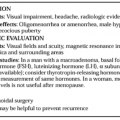HYPERTHYROIDISM IN THE CHILD
The various types of hyperthyroidism seen in pediatric patients are congenital (neonatal Graves disease and transitory Graves disease caused by transplacental passage of thyroid-stimulating immunoglobulins [TSIs]); and acquired (autoimmune thyroid disease, Graves disease, chronic lymphocytic thyroiditis, nodular toxic goiter [Plummer disease], thyroid carcinoma, exogenous iodide-induced hyperthyroidism [jod-basedow phenomenon], TSH-producing pituitary tumor, inappropriate secretion of TSH, and factitious hyperthyroidism). Graves disease is the most common type of hyperthyroidism. TSIs are responsible for causing Graves disease (see Chap. 42).
CLINICAL FINDINGS
Graves disease in the child and adolescent is much like the disease in adults. Its course is characterized by variable severity and a tendency for spontaneous remissions and exacerbations. The disease may appear at any age and occurs approximately five times as frequently among girls as among boys. The frequency increases with age after the first year of life, peaking during adolescence.
Nervousness, irritability, emotional lability, excessive sweating, increased bowel movements, and increased appetite with or without weight loss are the most commonly noted symptoms. Occasionally, obesity may occur. Mild exophthalmos, lid retraction and stare, goiter, tachycardia, increased systolic blood pressure with wide pulse pressure, and tremors almost always are present on physical examination. Usually, the onset of symptoms and signs is gradual. Deterioration in school performance is not an uncommon symptom.
Stay updated, free articles. Join our Telegram channel

Full access? Get Clinical Tree






